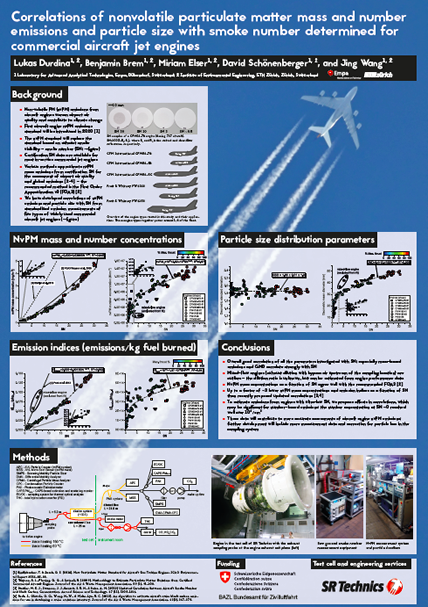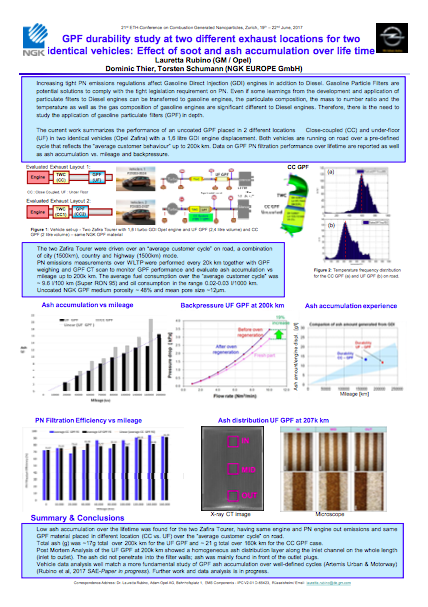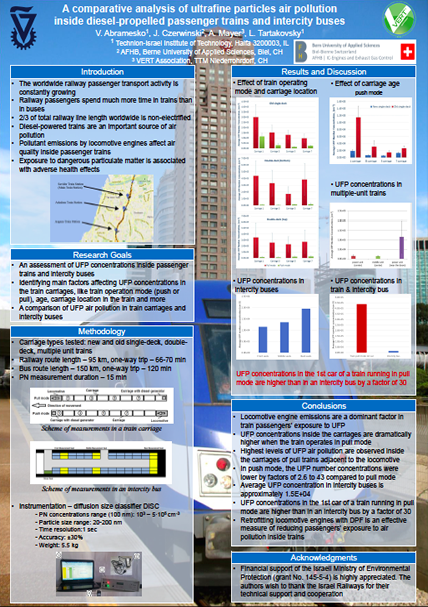Best Poster Awards 2017
21st ETH-Conference on Combustion Generated Nanoparticles
June 19th - 22nd, 2017 at ETH Zentrum, Zürich, Switzerland
The most accomplished poster presentations at the ETH Nanoparticles Conference (NPC) will be rewarded with a Best Poster Award.
The poster committee evaluates all posters on their design, clarity of the presentation - both of the poster and also when talking to the presenter - and scientific content. The three best poster presentations are recognized by award certificates and prize money. In 2017 the best-rated posters will received a prize money of CHF 600 (approx. USD 600) for the first, CHF 400 (approx. USD 400) for the second and CHF 200 (approx. USD 200) for the third ranked poster.
The three winners of the Best Poster Awards of the 21st ETH Nanoparticle Conference were announced during a ceremony in front of the entire audience on Thursday, June 22nd.
The winners were:
1st Prize
Lukas Durdina, EMPA
Correlations of Nonvolatile Particulate Matter Mass and Number Emissions and Particle Size with Smoke Number Determined for Commercial Aircraft Jet Engines
2nd Prize
Lauretta Rubino, GM Europe / Opel
GPF Durability Study at two Different Exhaust Locations for two Identical Vehicles: Effect of Soot and Ash accumulation over Lifetime
3rd Prize
Viktoria Abramesco, Technion Israel
A comparative Analysis of Ultrafine Particles air Pollution inside Diesel-Propelled Passenger Trains and Intercity Buses
Best Poster Awards Committee
- Prof. Dr. Barbara Rothen-Rutishauser
- Prof. Dr. Heinz Burtscher
- Prof. em. Dr. Peter Gehr
- Dr. Norbert Heeb
- Dr. Adrian Hess
- Thomas W. Lutz
- Dr. h.c. Andreas Mayer
- Oliver F. Bischof (Committee Chair)
Sponsor
Dr.med Otto Brändli, Swiss Lung Foundation, kindly agreed to sponsor the 2017 Best Poster Awards.
The Swiss Lung Foundation aims to increase and disseminate knowledge regarding the causes and consequences of air pollution to address one of the major problems of today's civilization. Its goal is to help people who are sick caused by pathogens or pollutants contained in the air they inhaled, and to find ways to improve air quality outdoors, in homes and at workplaces. It supports research and promotes scientific work in the areas of social and preventive medicine.





